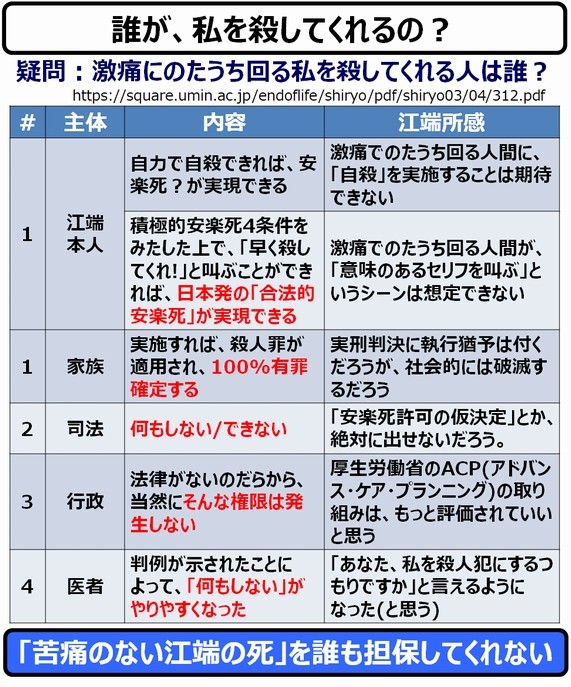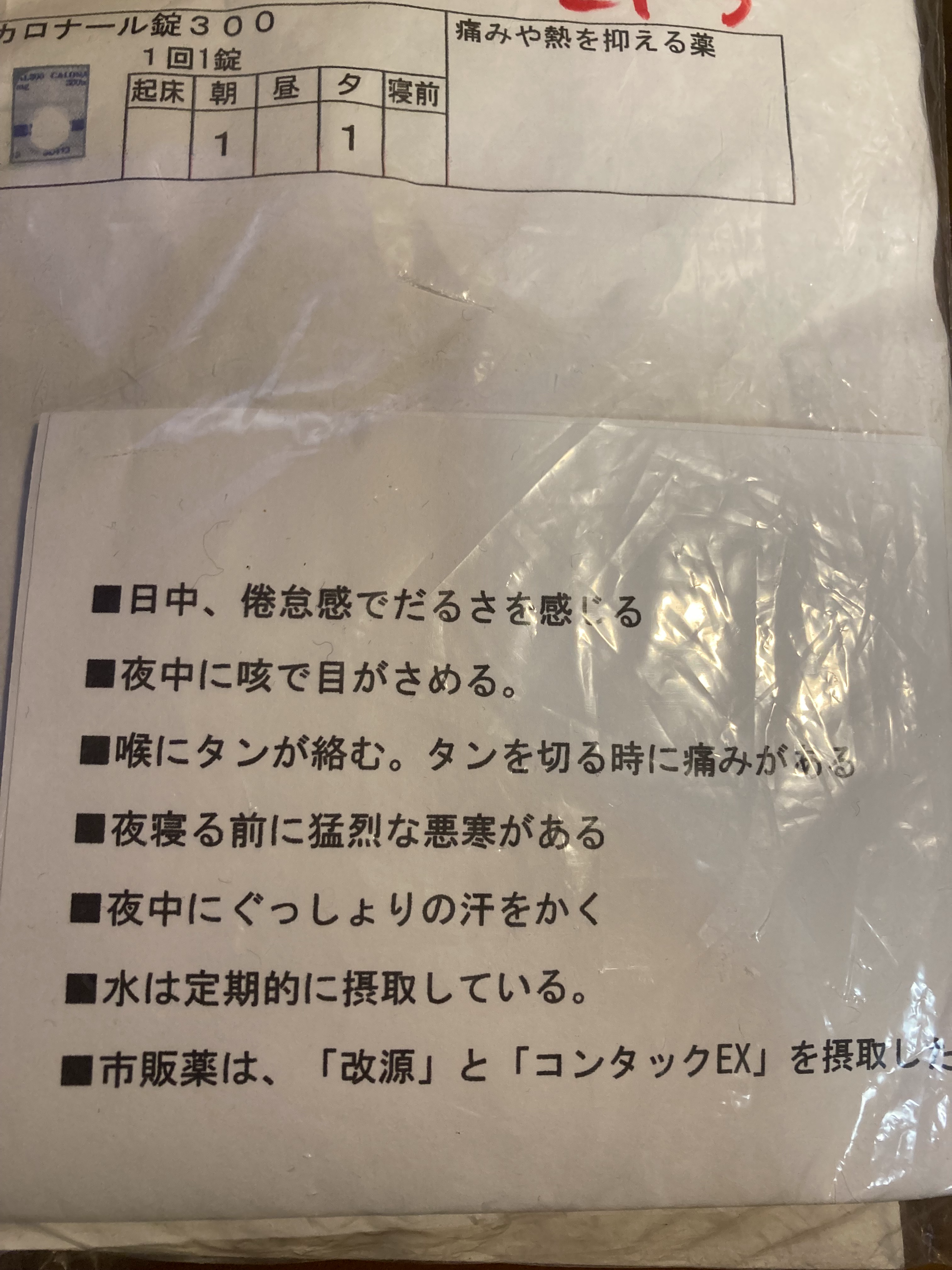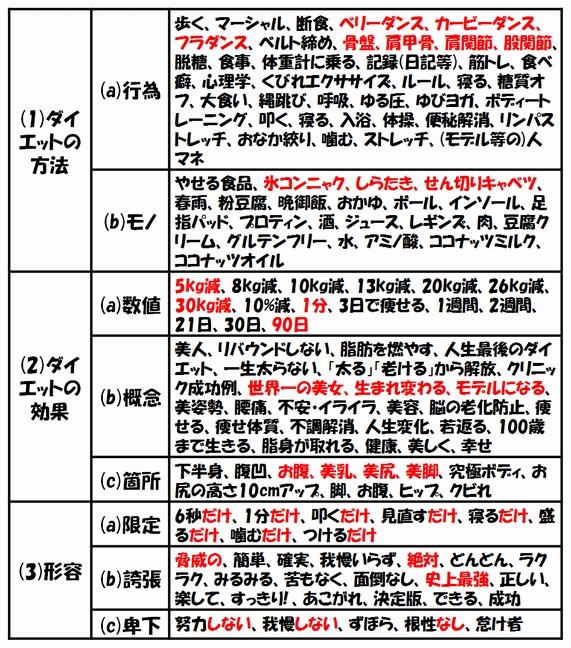嫁さんが、私と同じような症状(咳や熱)が出たようです。
My wife seems to have the same symptoms (cough and fever) as me.
嫁さんは急いでクリニックに行き、インフルエンザと診断され、薬を処方されて帰ってきました。今は寝こんでいます。
My wife rushed to the clinic, was diagnosed with the flu, and came home with a prescription for medication. She is now in bed.
私は、初期の症状から「インフルエンザではない」と思い込んでいたいのですが、インフルエンザだったのかもしれません。
I want to assume from the initial symptoms that it was not the flu, but it may have been the flu.
もしそうであったなら、私も「タミフル」などの処方して貰って、もう少しは軽い症状で回復できたかもしれません。
If that had been the case, I might have been able to get a prescription for “Tamiflu” or something similar and recover with a bit milder symptoms.
私は、「最悪」を想定して動くべきでした。
I should have assumed the “worst” and moved on.
「インフルエンザ=38.5超の高熱が継続」という従来の定説は、忘れた方が良いでしょう。
We should forget the conventional theory that “influenza = persistent high fever over 38.5”.
以前私も、36度後半の熱で受診して「インフルエンザ」と言われて、びっくりしたことがありました。
I was once surprised to go to the doctor with a fever in the high 36s and be told I had the flu.
今後は、デフォルトで「インフルエンザ陽性」と診断され、運が良ければ「インフルエンザ陰性」になるくらいの気持ちで受診した方が良いと思います。
From now on, I think it would be better to go to the doctor's with the mindset that you will be diagnosed as “influenza positive” by default, and if you are lucky, you will be “influenza negative.”
------
患病中は、もう、何もする気がなくなります。
During the illness, I no longer feel like doing anything.
仕事は勿論ですが、ブログの更新ですらどうでも良くなります。
Work, of course, becomes unimportant, and even updating the blog becomes unimportant.
そして、「別のクリニックを受診した方がいいんじゃないの」という嫁さんのアドバイスすら、もう耳に入ってきません。
And even my wife's advice, “Maybe you should see another clinic,” is no longer falling on deaf ears.
予約する作業が苦痛で、移動する労力を考えるだけで、悪寒がしてきます ―― で、私の場合、タミフルを処方される機会を失ったと言えます。
The process of making an appointment is painful, and just the thought of the effort of traveling gives me chills -- and in my case, I can say that I lost my chance to be prescribed Tamiflu.
「考える力」が完全停止、という状態になります。
The “ability to think” comes to a complete standstill.
それ故、患病中の患者にたいしては、「暴力」が必要となります。
Therefore, “violence” is necessary for patients who are suffering from the disease.
近くにいる人が、勝手に予約して、無理矢理患者をクリニックに連れていく、ということをしないといけません。
Someone nearby must make an appointment independently and force the patient to visit the clinic.
患者は最適な選択ができない状態だからです。
The patient is in no condition to make the best choice.
今の私が、世界で一番憎悪しているフレーズは、『死ぬ気になれば、何でもできる』です。
===== 引用ここから =====
===== Quote from here =====
「助ける」ためには、『物理的に助ける』しかありません。
The only way to "help" is to "physically help."
『気持ちに寄り添う』ことは、「助ける」ことにはなりません。
Being 'in touch with their feelings' does not mean 'helping.'
「ロープを持ってきて、引き上げる」ところまでやって、初めて「助けた」と言えるのです。
Only when you get to the point of "bringing the rope and pulling them up" can you say that you have "saved" him.
===== 引用ここまで =====
===== Quote here =====
問題は、患者の側に運よく、こういう人(伴侶、家族、友人)がいればいいのですが、これからの時代、こういう人間関係が「レアケース」になっていくことは、確定した未来です。
The problem is that while it would be nice if the patient were lucky enough to have such a person (spouse, family member, friend) on their side, it is a definite future that such relationships will become “rare cases” in the future.
少子高齢化、晩婚化、非婚化はもちろんですが、そうでなくても、長生きすれば、だれだって、最後には一人で逝くことになります。
Of course, with the declining birthrate and aging population, as well as the trend towards people marrying later and not getting married at all, even if this is not the case, if you live a long life, you will eventually pass away alone.
私は、これまで、『家族をセーフネットの道具として考えない』と明言してきました。
I have always made it clear that I do not consider family members as tools for the safety net.
私は、『その覚悟ができた者だけが、"親"と呼ばれる資質を有する』と思っています。
私も、自分の親を「踏み台」として生きてきましたので、自分がその例外になることなど、許されるべきではないと思っています。
I have also lived my life using my parents as a “stepping stone,” so I don't think I should be allowed to be an exception to the rule.
私は、「助けてくれる」という方向は期待していないのですが、その分、「苦痛回避の手段」の方向を充実させて欲しいです。
I don't expect "someone helps me” direction, but I would like it to be more of a “pain-avoidance” direction.

(↑クリックでコラムに飛びます)
(Click to go to the column)
この問題、まだ正面に出てきていないようです。まあ、誰しも、個人的に気がついた時には、手遅れになっているという事案ですが。
This problem doesn't seem to have come to the fore yet. When anyone notices it personally, it's already too late.
私は、増税も社会保障も軍事費も、もうどーでもいいし、正直に言えば、安楽死や尊厳死も期待していません。
I don't care about tax increases, social security, or military spending, and to be honest, I don't even expect euthanasia or death with dignity.
『苦痛を回避する薬の処方の自由化』 ―― これを公約としてくれる政党が出てきたら、個人献金であれ、裏金であれ、なんだって協力します。
'Liberalization of the prescription of painkillers' - If a political party comes forward with this as a campaign promise, I will support them in any way I can, whether through personal donations or under-the-table payments.
『じゃあ、江端が新党を立ち上げろよ!』と言われるでしょう(当然です)が、これ、法制化するの、無茶苦茶難しいんですよ(検討済み)。
People will say, “Well, why don't you start a new political party, Ebata!” (which is only natural), but it isn't easy to make this a law (it's already been considered).
それに、私自身、私以外の人が、苦しむことについては、興味ありません。「自力救済」で十分です。
Besides, I have no interest in the suffering of others. 'Self-help' is enough for me.
とすれば、自由研究による、非合法薬物の製造ですね。
If so, it would be the production of illegal drugs as a free research project.
大学院の専攻間違えたかなぁ。
I wonder if I chose the wrong major for graduate school.
今から薬学を志して、間に合うだろうか?
Can I make it in time if I start studying pharmacy now?
あと、違法原材料の入手ルートを確保する方法も検討しなければなりません。
I also need to consider ways of securing routes for obtaining illegal raw materials.
色々考えることは多いのですが、考えるためには、患病できません。
There are many things to think about, but I can't think about them when I am sick.
-----
ラクして逝くためには、健康第一 ―― 本日の日記も、訳の分からん結論になりました(今さらですが)。
Health comes first in order to live a comfortable death. Today's diary also concluded that I don't understand (even though it's a bit late now).


